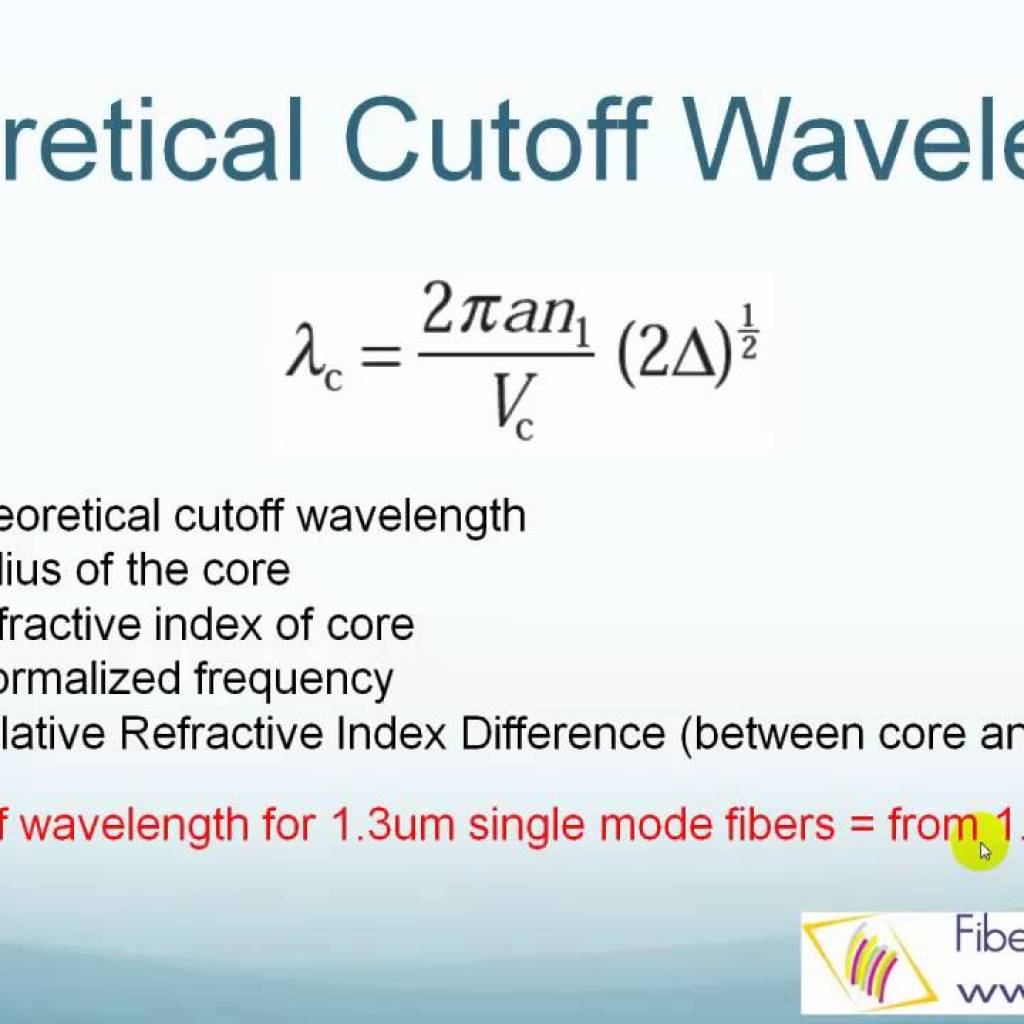
Source: YouTube
Understanding Cut-off Wavelengths in Fiber Optics
Introduction to Guided Modes in Optical Fibers
Optical fibers are essential components in modern telecommunications, allowing for the transmission of light over long distances with minimal loss. The behavior of light within these fibers is characterized by guided modes, which are specific patterns of electromagnetic fields that can propagate through the fiber. The number of these modes that a fiber can support is dependent on the optical wavelength of the light being transmitted. Generally, shorter wavelengths allow for more modes, while longer wavelengths may support only a single mode or none at all.
Defining Cut-off Wavelength
The cut-off wavelength is a critical parameter in fiber optics, marking the threshold beyond which a particular mode ceases to propagate. In single-mode fibers, the cut-off wavelength for the LP11 mode is especially significant, as it delineates the boundary of single-mode operation. Below this wavelength, both the LP01 and LP11 modes are supported.
Mode Behavior Near Cut-off Wavelengths
As the wavelength approaches the cut-off, the properties of the modes can change dramatically. Typically, the mode radius, and consequently the effective mode area, increases sharply. This results in a decrease in the fraction of power contained within the fiber core. In multimode step-index fibers, this behavior is evident and similar patterns are observed in fibers with various transverse refractive index profiles.
Long-Wavelength Transmission Challenges
In step-index fibers, although theoretically there is no cut-off for the fundamental LP01 mode, practical challenges arise at long wavelengths. The mode size can extend beyond the fiber core, leading to high propagation losses due to sensitivity to microbending. This results in gradually increasing losses rather than a distinct mode cut-off.
Impact of Fiber Design on Cut-off Wavelengths
Different fiber designs can influence cut-off wavelengths significantly. For instance, photonic crystal fibers may exhibit a fundamental mode cut-off. Additionally, fibers that lack radial symmetry or are strongly bent can have polarization-dependent cut-off wavelengths. Near the cut-off wavelength, bend losses can increase sharply due to the expanded mode area, complicating precise determination of cut-off wavelengths in experiments.
Simulating Cut-off Wavelengths
Accurate simulation tools are invaluable for exploring how mode properties evolve near cut-off wavelengths and understanding their impact on fiber performance. Such simulations can provide insights into optimizing fiber design and enhancing device performance.
Conclusion
Understanding cut-off wavelengths is crucial for the effective design and application of optical fibers in telecommunications and other fields. By appreciating the nuances of mode behavior and the influence of fiber design, engineers and scientists can better harness the capabilities of fiber optics to meet the demands of modern communication systems.

Source: YouTube
Feel free to comment your thoughts.



